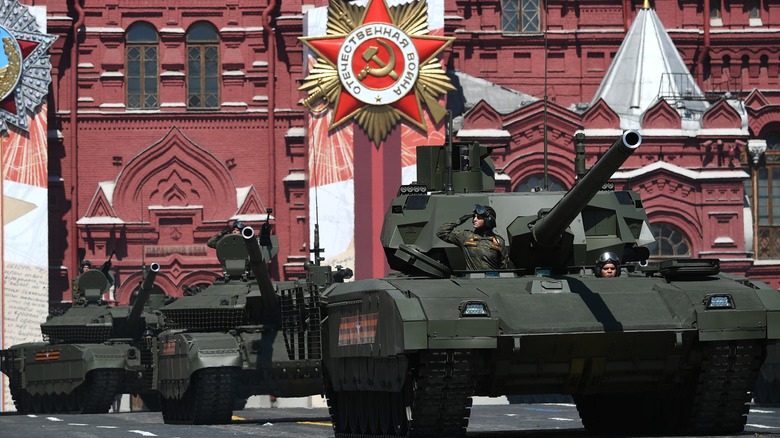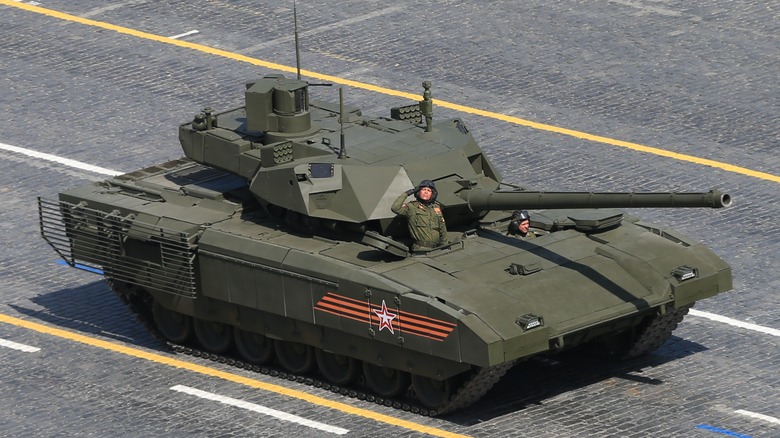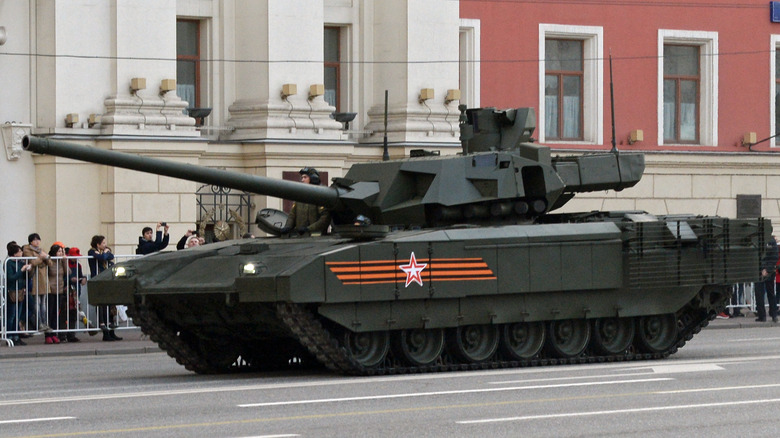T-14 Armata: Russia's Next-Generation Battle Tank
Main battle tanks like Germany's Leopard 2 and America's M1 Abrams are considered the pinnacle of armored warfare. Both tanks are quick off the line, capable of laying down an absurd amount of ordinance downrange and very resistant armor made out of all manner of classified material. Rolling into combat against either the Abrams or the Leopard 2 is a fool's errand for the most part.
That was until Russia unveiled it's newest tank, the T-14 Armata, which is slated to replace thousands of aging and woefully ill-equipped Soviet era tanks. On paper, at least, the T-14 is enough to make Western armies pause. Especially given reports that the tank is being used during Russia's illegal invasion of Ukraine, it may be time for NATO forces to get a handle on what exactly they may be facing.
From it's angular appearance, the T-14 looks a lot like other modern tanks, but it operates very differently. Instead of housing crew members in the rotating turret like just about every other tank in use, the T-14 features an automated turret and gun while the crew sits inside the main body of the vehicle, theoretically allowing them to be more protected.
A seemingly 21st century tank
Exact confirmed details about the T-14 Armata are scarce, but the tank first came to the attention of Western media in 2015 during a parade through the streets of Moscow of new Russian armored equipment. It's armed with a 125 millimeter smoothbore main gun, capable of firing a variety of ammunition.
A smoothbore gun on a modern tank might not sound all that exotic, as both the Leopard 2 and Abrams have used similar weapons systems for decades. The T-14, however, sets itself apart: The gun can supposedly fire missiles in addition to conventional tank shells, turning into a potentially formidable anti-armor weapon platform. It is also fitted with an auto-loader in the turret, eliminating the need for a fourth crew member.
Russian sources state that the T-14 has a top speed of around 50 miles per hour; very fast for a tank. For comparison, the M1 Abrams has a top speed of around 42 miles per hour. In 2017, BBC reported that T-14s were equipped with active protection systems (APS) that allowed the vehicle to shrug off anti-tank weapons. The tank's outer shell negates the warhead's effectiveness before it breaches the hull, a notable advancement over Soviet era tanks like the T-72 that had no such countermeasures.
Too little, too late?
Those are the specifications on paper, but getting a large amount of tanks onto the battlefield is another feat entirely. In 2015, BBC reported that Russia wanted to start large-scale production by 2025, and eventually field 2,300 total tanks. Now, in 2023, it has been reported that only 40 have actually been produced — about one percent of the total run.
For the very few tanks that have actually been used in any of Russia's internationally condemned combat operations, the results speak for themselves. It will likely be several more years until Western forces come across T-14s in any large numbers. To make matters worse, the British military has said that Russian tank crews are not fans of the T-14 and tank commanders don't have confidence in early production examples.
While the T-14 is intimidating on the surface, and surely looks the part of a 21st century main battle tank, it has nowhere near the operational capacity as existing Abrams or Leopard 2 tanks that are currently being fielded by Ukrainian forces.


